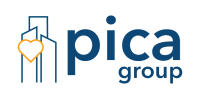How to navigate body corporate property cladding legislation in Queensland
To deal with the combustible cladding crisis in Queensland, the state government has initiated its Safer Buildings program, which is currently progressing through three stages of its checklist
Owners corporations of body corporate building with combustible cladding can look to the body corporate property cladding legislation in Queensland, as well as the Queensland Government’s related programs, for guidance on cladding risk assessment and rectification works.
Owners should make sure they have met their registration requirements to avoid missing any three-part checklist deadlines. Failure to comply can result in financial penalties.
Here is everything you need to know about body corporate property clagging legislation in Queensland, and what those affected need to do:
- Body corporate property cladding legislation
- The registration process
- The buildings that need to be registered
- Non-eligible buildings
- The three-part checklist
1. Body corporate property cladding legislation
In October 2018, the Queensland Government’s Building and Other Legislation (Cladding) Amendment Regulation 2018 came into effect.
This has helped establish the Safer Buildings program to enable the Queensland Building and Construction Commission (QBCC) and owners to identify and rectify non-compliant combustible cladding. This piece of body corporate property cladding legislation has been instrumental in dealing with Queensland’s combustible cladding crisis.
Body corporate property cladding legislation in Queensland and the Safer Buildings program have made it compulsory for building owners of certain building types to register their building with the Queensland Government’s Safer Buildings program and perform an online assessment known as the Combustible Cladding Checklist.
During registration, the system directs owners through the combustible cladding checklist to determine if the building has combustible cladding and whether further assessments or actions are required.
To date, these new laws have required around 12,000 Queensland building owners to report the material on the exterior of their building to the QBCC.
For an overview of how to register and what the complete checklist entails, see the Combustible Cladding Checklist Reference Guide and Safer Building’s FAQ.
The buildings that need to be registered
New body corporate property cladding legislation requires that buildings captured under Part 4A of the regulation be registered.
These include buildings that are:
- Privately owned
- A class 2-9 building
- Of type A or B construction
- A building for which development approval was given to construct the building or alter the building’s cladding between 1 January 1994 and 1 October 2018.
For further information on eligibility requirements, the registration process and the checklist, refer to the Queensland Government’s Guideline for Assessing Buildings with Combustible Cladding.
Non-eligible buildings
Buildings that match the following descriptions do not need to register under current body corporate property cladding legislation:
- Private, single detached dwellings used for residential purposes that are not located above or below another dwelling
- Private attached dwellings situated side-by-side to another attached dwelling such as a duplex, townhouse or row house
- Private carports, garages or sheds used in association with a dwelling.
The three-part checklist
Upon registration, eligible building were directed to complete a three part checklist, in accordance with current body corporate property cladding legislation.
| Part 1 | The checklist began with four simple questions about your building:
• What is your building used for? Owners were asked to complete the checklist by printing, signing and uploading a statutory declaration. Deadline: 29 March 2019 |
| Part 2 | If Part 1 did not rule out the presence of combustible cladding on a building, owners were expected to complete the checklist Part 2. This required a building industry professional to complete Form 34 – Building Industry Professional Statement.
Most owners who completed Part 2 did not need to continue further with the checklist. Those who did need to move to Part 3 were notified. Deadline: 31 July 2019 |
| Part 3A | In the third stage, building owners were expected to engage a fire engineer and register them. Suitably qualified fire engineer can be found using the Board of Professional Engineers of Queensland.
Deadline: 31 October 2019 |
| Part 3B | The engaged fire engineer was required to provide a building fire safety risk assessment and a fire engineer statement.
Owners were required to use these documents to complete Part 3B of the online checklist. Deadline: 3 May 2021 |
When it comes to managing a strata property, there are various compliance or legislative requirements that are needed to protect owners and residents. When the situation allows, you don’t want to miss out on the chance of an insurance claim. Click here to learn more about Community Health & Safety and related services to ensure your protection. You can also click here to download our FREE Community Living guide series on defects. If you would like to learn more about the services we offer, click here for a free assessment.
